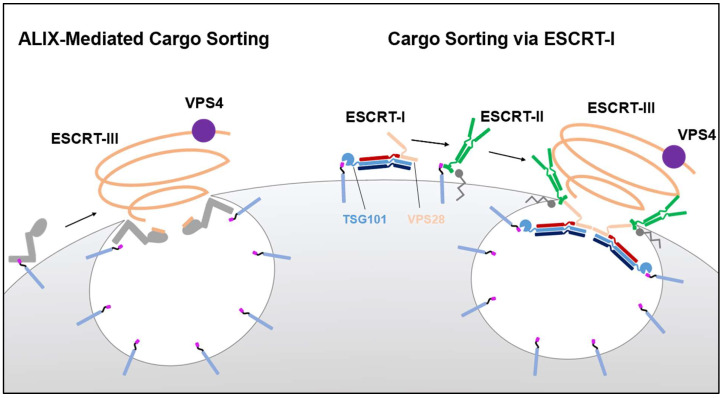Figure 1.
The respective roles of ALIX and ESCRT-I in the sorting of membranous cargo. Upon internalization, ubiquitylated cargo is detected by ALIX (left) and ESCRT-I (right) for compartmentalization into intraluminal vesicles that are destined for degradation via the late endosome. Both ALIX and ESCRT-I contain ubiquitin binding domains that facilitate this first step. Unlike ESCRT-I, ALIX possesses an ESCRT-III binding domain that allows for the direct recruitment of ESCRT-III and VPS4, the machinery required for sealing of cargo within intraluminal vesicles and abscising these vesicles from the endosomal membrane. In a similar fashion, the ESCRT-I component TSG101 binds ubiquitylated cargo, while the VPS28 component can recruit ESCRT-III through ESCRT-II which also binds ubiquitylated cargo as well as phospho-inositol lipids.

